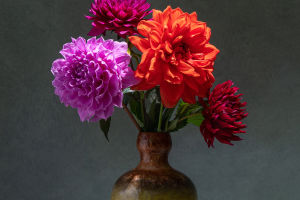Indoor decorative plants are widely popular in modern homes and offices for their beauty and ability to purify the air.
However, proper maintenance and management are essential to keep these plants healthy and thriving.
First, choosing the right plants for your living space is the first step to success. Different plants have different needs for light, humidity, and temperature, so understanding these needs can help you choose the most suitable type of plant.
For example, some plants such as cacti and succulents are suitable for dry environments, while ferns prefer humid conditions.
Light is one of the important factors for indoor plant growth. Most plants require bright indirect light, while some plants can survive in low-light environments. To ensure that the plant receives the right amount of light, it is best to place it near a window but avoid direct sunlight to avoid leaf burns.
If the light is insufficient, you can consider using a plant grow light to supplement the light. Watering is also key to maintaining plant health. Too much or too little water can cause damage to the plant.
Knowing the watering needs of each plant can usually be determined by observing the moisture content of the soil. Ideally, watering should be done when the soil surface is slightly dry to promote healthy root growth.
Fertilization is another important part of promoting plant growth. During the growing season (usually spring and summer), regular application of fertilizers suitable for the plant type can provide the necessary nutrients for the plant.
However, in winter, most plants enter a dormant period, and fertilization should be reduced or stopped at this time to avoid affecting the plant's natural cycle. In addition, it is also important to keep the environment around the plant clean.
Regularly removing dust from the leaves of the plants not only allows the plants to photosynthesize better but also prevents the breeding of pests and diseases.
Pest and disease prevention is an important part of indoor plant management that cannot be ignored. Observe the leaves and stems of the plants to detect signs of pests and diseases in time, such as discoloration, spots, or insect infestations.
For minor pests, you can try spraying the plants with soapy water or wiping them gently with a damp cloth. If the pests are serious, you may need to use a special pesticide and follow the instructions for use.
Maintaining a suitable air humidity can also help prevent the occurrence of pests and diseases, especially in dry seasons, you can increase the humidity of the environment by spraying or placing a humidifier.
Seasonal changes can impact the growth of indoor plants, especially in winter, when the light hours are shortened and the temperature is lower, which may cause the plants to grow slowly or even go dormant.
Therefore, in winter, the frequency of watering and fertilizing should be reduced to adapt to the growth state of the plants. For some tropical plants, special attention should be paid to the temperature in winter to ensure that the indoor temperature is not lower than the range suitable for their growth.
Another aspect worth paying attention to is the repotting and propagation of plants. As the plants grow, their roots may fill the potting soil, resulting in restricted growth.
Generally speaking, indoor plants are repotted every 1-2 years, and the use of new soil can provide new nutrients for the plants and promote their healthy growth.
When repotting, gently loosen the roots and remove the aging roots to help the plants adapt to the new environment. In terms of propagation, many indoor plants can be propagated by cuttings, divisions, or sowing, which can not only expand their plant species but also give friends or family a natural gift.
The maintenance and management of indoor decorative plants require time and patience. Still, through reasonable management measures, the growth state of plants and the beauty of the environment can be effectively improved.
Choosing the right plants, providing the right amount of light and water, fertilizing regularly, and controlling pests and diseases, as well as paying attention to seasonal changes and the growth needs of plants are all keys to success.
In a busy life, taking some time to interact with these green companions can not only improve the quality of life but also bring peace of mind and joy. Whether you do it alone or with your family, this close contact with nature will become an indispensable and wonderful experience in your daily life.


